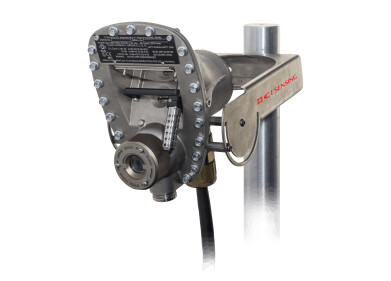Air Monitoring
How Can Smart Cities Improve Air Quality?
Mar 29 2021
After a global pandemic brought entire industries to a standstill and removed countless passenger cars from roads around the world, one of the more encouraging environmental implications of coronavirus was the immediate impact that the drop-off in activity had on air quality. Although the lifting of lockdown measures has seen pollution levels largely return to the same as 2019, the issue of air quality is one that is receiving more mainstream media coverage.
Concerned citizens are keen to ensure that the lessons of 2020 do not go unlearned, putting pressure on their politicians to introduce initiatives aimed at improving air quality in and around their towns and cities. The use of smart-enabled technology could be one method of achieving that objective, delivering multiple benefits with one solution. Here are a handful of the ways in which smart cities could help boost air quality in Britain and beyond.
Better quality data
Traditionally, air quality data has been amassed by one or two centralised monitoring stations. Equipped with highly sensitive equipment, these hubs are capable of collecting detailed information on the state of the airways in their vicinity – but not further afield. Given that air quality can vary significantly from one neighbourhood to another, a better solution is clearly required.
Step forward mobile monitoring technology. Of course, there are challenges as well as benefits for small sensor technology, since the quality of the data they record is not as impressive as their larger counterparts. However, as the tech is advancing, the discrepancy between the two is not as pronounced as it once was and the greater coverage these sensors offer more than offsets any other drawbacks.
Affordability
Establishing the return on investment (ROI) of smart air pollution monitors is no easy task. Indeed, the financial cost of medical conditions caused or exacerbated by poor quality air is extremely difficult to quantify, since it incorporates a whole host of factors such as reduced employee activity, medical bills and more. However, there are opportunities for smart tech to improve the affordability of sensors.
For example, if urban air quality monitor manufacturers and 5G providers were able to cooperate on the deployment of both technologies, significant savings could be incurred by both. What’s more, there are sponsorship opportunities to be pursued with regard to the real estate business, since agents could theoretically benefit from advertising their properties as enjoying good air quality.
Real-time decision-making
Perhaps one of the most important – and most underappreciated – boons of a smart-enabled air quality monitoring network is the ability to analyse data and inform actionable insights in real-time. For example, the collection of data across an entire cityscape could help to identify particular pollution hotspots where concentrations of contaminants like NOx, ozone and particulate matter are especially bad.
This information could then be used to warn individual citizens of the situation and advise them to take alternative commuting routes, as well as link directly with hybrid vehicles and automatically switch them to electric mode. In this manner, residents could avoid making the problem any worse and protect their own lungs until it had improved.
Digital Edition
AET 28.2 April/May 2024
May 2024
Business News - Teledyne Marine expands with the acquisition of Valeport - Signal partners with gas analysis experts in Korea Air Monitoring - Continuous Fine Particulate Emission Monitor...
View all digital editions
Events
Jul 10 2024 Birmingham, UK
Jul 21 2024 Cape Town, South Africa
Australasian Waste & Recycling Expo
Jul 24 2024 Sydney, Australia
Jul 30 2024 Jakarta, Indonesia
China Energy Summit & Exhibition
Jul 31 2024 Beijing, China


















